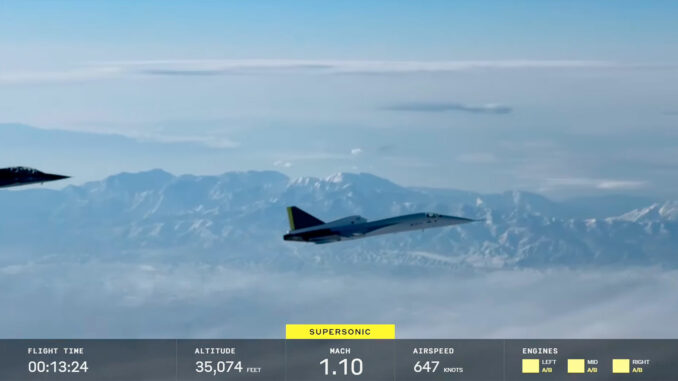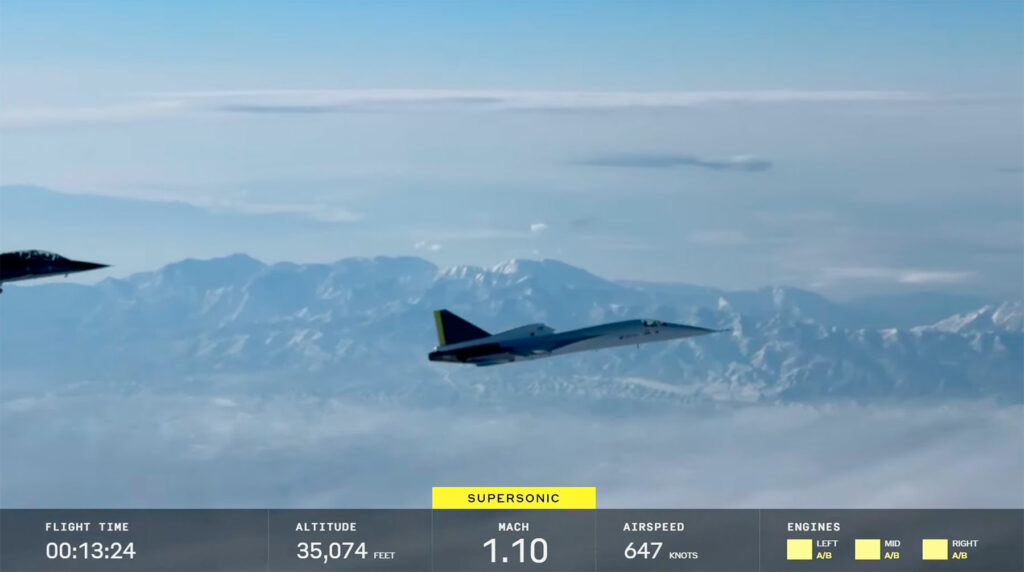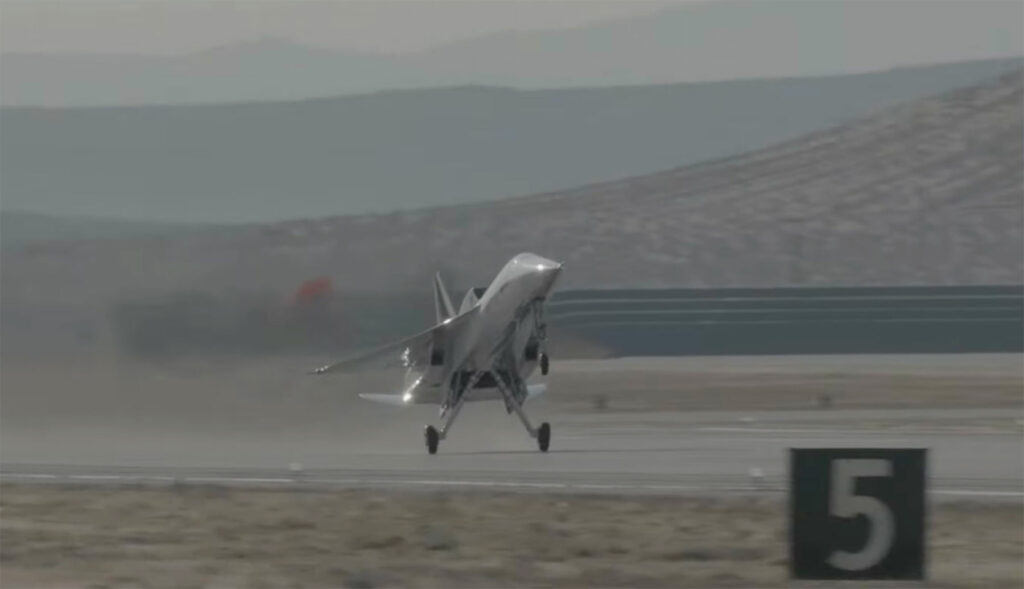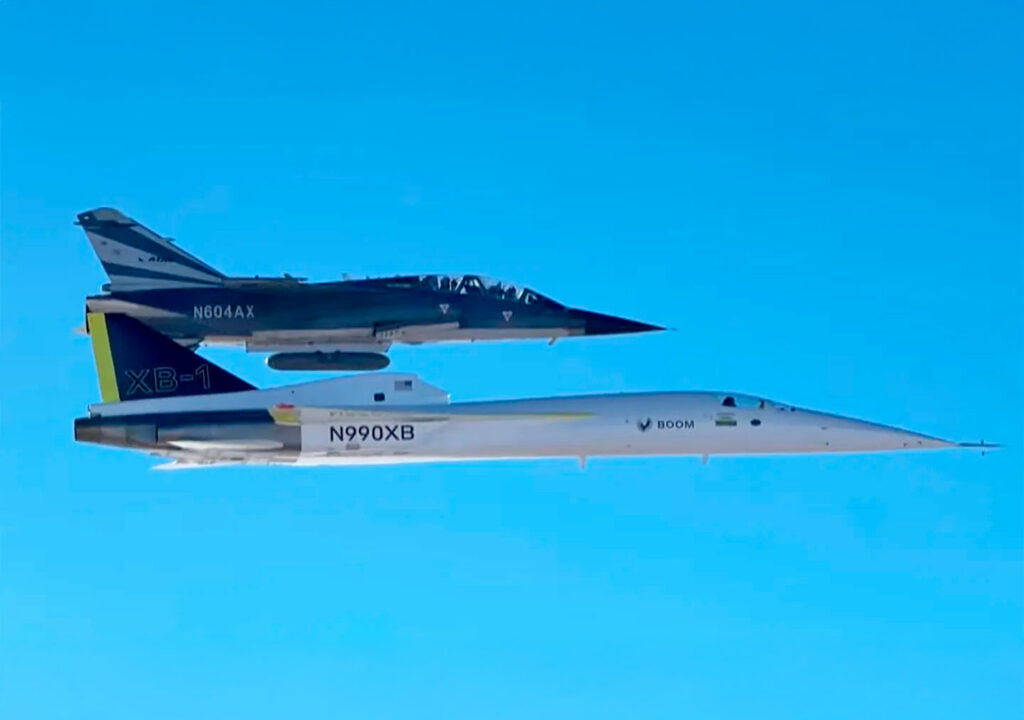
Boom Supersonic’s XB-1 demonstrator reached Mach 1.1 during a test flight, marking a key step towards the development of the Overture supersonic commercial aircraft.
On January 28, 2025, Boom Supersonic’s XB-1 made its first supersonic flight, reaching Mach 1.1. This demonstrator is a crucial step towards the Overture, a supersonic commercial aircraft designed to carry 64 to 80 passengers at a cruising speed of Mach 1.7. With orders from major airlines and ambitious targets, Boom Supersonic aims to revolutionize air transport by dramatically reducing flight times.
The historic XB-1 flight
On January 28, 2025, Boom Supersonic’s XB-1 supersonic demonstrator broke the sound barrier, reaching a speed of Mach 1.1 (around 1,355 km/h). At the controls was Tristan “Geppetto” Brandenburg, former US Navy pilot and Boom test pilot. The flight took place from the Mojave Air & Space Port in California, in the Bell X-1 supersonic corridor, an area dedicated to high-speed testing. The XB-1 reached an altitude of 10,760 meters before accelerating beyond the speed of sound. The flight, which lasted around 34 minutes, marked the first time an independently developed aircraft by a private company exceeded Mach 1.

Technical characteristics of the XB-1
The XB-1, nicknamed “Baby Boom”, is a one-third scale technology demonstrator of the Overture. Measuring 19.1 meters in length with a wingspan of 6.4 meters, it is powered by three General Electric J85-15 turbojet engines, together delivering over 5,440 kilograms of thrust. These engines, used notably on the Northrop F-5 and T-38, enable the XB-1 to reach an estimated top speed of Mach 2.2 (approx. 2,695 km/h). The aircraft incorporates advanced technologies such as carbon-fiber composites, state-of-the-art avionics and digitally optimized aerodynamics. The XB-1’s air inlets slow supersonic air to subsonic speeds, effectively converting kinetic energy into pressure energy, enabling conventional jet engines to operate efficiently at supersonic speeds.
The Overture: the future of supersonic transport
The Overture is designed to carry between 64 and 80 passengers at a cruising speed of Mach 1.7 (approx. 2,083 km/h), with a maximum range of 8,334 kilometers. Boom Supersonic plans to unveil the first Overture in 2026, with test flights starting in 2027 and type certification expected by 2029. The aim is to offer commercial flights as early as 2030, significantly reducing travel times on transoceanic routes. For example, a flight between New York and London could be completed in around 3.5 hours, compared with over 7 hours at present.
Orders and strategic partnerships
Boom Supersonic has already received 130 orders and pre-orders for the Overture, with commitments from major airlines such as American Airlines, United Airlines and Japan Airlines. These partnerships testify to the airline industry’s confidence in the potential of supersonic transport. In addition, Boom is collaborating with Northrop Grumman to develop a military variant of the Overture, designed for rapid response, personnel and cargo transport, and extended surveillance missions.


Challenges and prospects for the supersonic market
The supersonic jet market is estimated at $26.04 billion in 2024 and is expected to reach $31.65 billion by 2029, with a compound annual growth rate of 3.98%. However, challenges remain, including environmental regulations, noise and economic profitability. The Concorde, for example, was withdrawn from service in 2003 due to high operating costs and environmental concerns. Boom Supersonic aims to overcome these obstacles by developing aircraft that are more efficient, use sustainable fuels and meet current noise standards.
The success of the XB-1 and the development of the Overture could transform the landscape of commercial aviation. A significant reduction in flight times would offer airlines competitive advantages, attract premium customers and open up new routes. However, integrating supersonic aircraft into global airspace will require close collaboration with regulators to ensure safety, traffic management and environmental compliance. In addition, economic viability will depend on the ability to offer competitive fares compared with current business classes, while keeping operating costs under control.
As Boom Supersonic moves towards commercialization of the Overture, the company will face technical, regulatory and economic challenges.
War Wings Daily is an independant magazine.